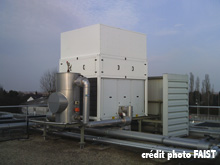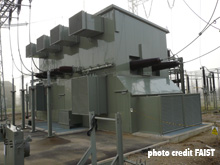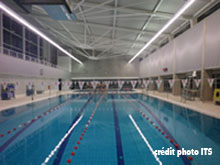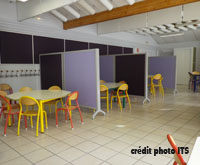The soundproofing of buildings (new or existing) is a major issue during works (construction or renovation) related to many edifices, including Public-Access Buildings (PAB).
In particular, on the one hand, health establishments and, on the other hand, educational establishments (such as kindergartens or elementary schools, colleges, high schools, regional institutions for adapted education, universities and establishments for high, general, technical or professional education, whether public or private), are, in France, subject to the provisions of two decrees, each dated April 25, 2003, and each relating to the limitation of noise.
The standardized weighted sound insulation between rooms is regulated, as is the weighted pressure level of the standardized noise of the noise perceived in the rooms, the standard sound pressure level of the noise generated by each equipment or the reverberation time of the spaces, when it is not the equivalent absorption area of the absorbent linings installed there.
The acoustic comfort of the occupants of such premises (including sports halls such as those reserved for the following sports: gymnastics, athletics, volleyball, handball, basketball, tennis, fencing and table tennis, subject to standard NF P 90-207 sports halls - acoustics) is at stake, whether they are engaged in a professional activity, or whether they are, depending on the case, respectively, patients or pupils / students ; the soundproofing of buildings is essential (that of nurseries too, but if for the time not regulated).
|
swimming pool |
soundproof |
The reverberation control of public premises is one of the main activities of ITS.
|

Air Handling Unit (AHU) |

soundproofed building |
The limitation of equipment noise often motivates the recourse to ITS. |
In addition, for offices and associated areas (individual or collective office, open space, levels awaiting conversions, meeting or training room, relaxation area, restaurant), acoustic performance levels and criteria are defined in the standard NF S 31080 which, although it is not compulsory, is nonetheless the object of a fairly broad consensus as regards the key indicators of the acoustic quality of such work premises, such as overall sound level (external noises and equipment), reverberation time, impact noise, indoor airborne noise insulation, spatial (noise) decay rate (distinguishing between 3 performance levels: current, performing and highly performing).
The challenge is to fight against discomfort, stress, fatigue or worse (it is a public health problem) in relation to these professional environments.
Moreover, the work premises are, in France, subject to the provisions of the decree of 30 August 1990 relating to their acoustic correction (again, it comes to the quality of the soundproofing of buildings).
The decrease of the noise level when doubling the distance to the source, measured (as the case may be) either in the empty room i.e. without any machine or production facility, or in the premises after installation of the machinery and apparatus of production, is regulated there, when machines and appliances are likely to expose workers to a daily noise exposure level exceeding 85 dB (A).
In addition, the exposure of workers to the risks arising from noise is regulated as a result of the transposition into French law of Directive 2003/10/EC, which sets in its Article 231-127. - I. - exposure limit values - that is, a daily noise level of 87 dB (A) or a peak sound pressure level of 140 dB (C) - and exposure values that trigger prevention action - that is, a daily noise exposure level of respectively 80 dB (A) and 85 dB (A) or a peak sound pressure level of 135 dB (C) and 137 dB (C) respectively the nature and scope of the action (see Decree No 2006-892 of 19 July 2006 on safety and health requirements applicable in the event of exposure of workers to the risks arising from noise and amending the Labor Code).
Furthermore, the fight against neighborhood noise often imposes particular acoustic performances on the building envelope (e.g. industrial: hosting noisy productions) since it must oppose the transmission of noise towards environment.
Thus the prefectural decree which sets the noise limits admissible in property limits is supplemented by the Decree of 23 January 1997 on the limitation of noise emitted into the environment by Establishments Classified for Environmental Protection. (ECEP) which regulates the emergence i.e. the difference between the A-weighted equivalent continuous pressure levels of the ambient noise (establishment in operation) and the residual noise (in the absence of the noise generated by the establishment, but measured over the period of operation of the establishment).
The soundproofing of buildings thus constitutes for acousticians a wide field of application (of technologies in relation to noise emissions and to the limitation of their propagation) for on-site measurements, studies and calculations (in particular impact and sizing), and the definition of ways to fight against noise and to improve comfort
ITS can assist you with all your soundproofing projects for buildings, especially industrial or tertiary.

